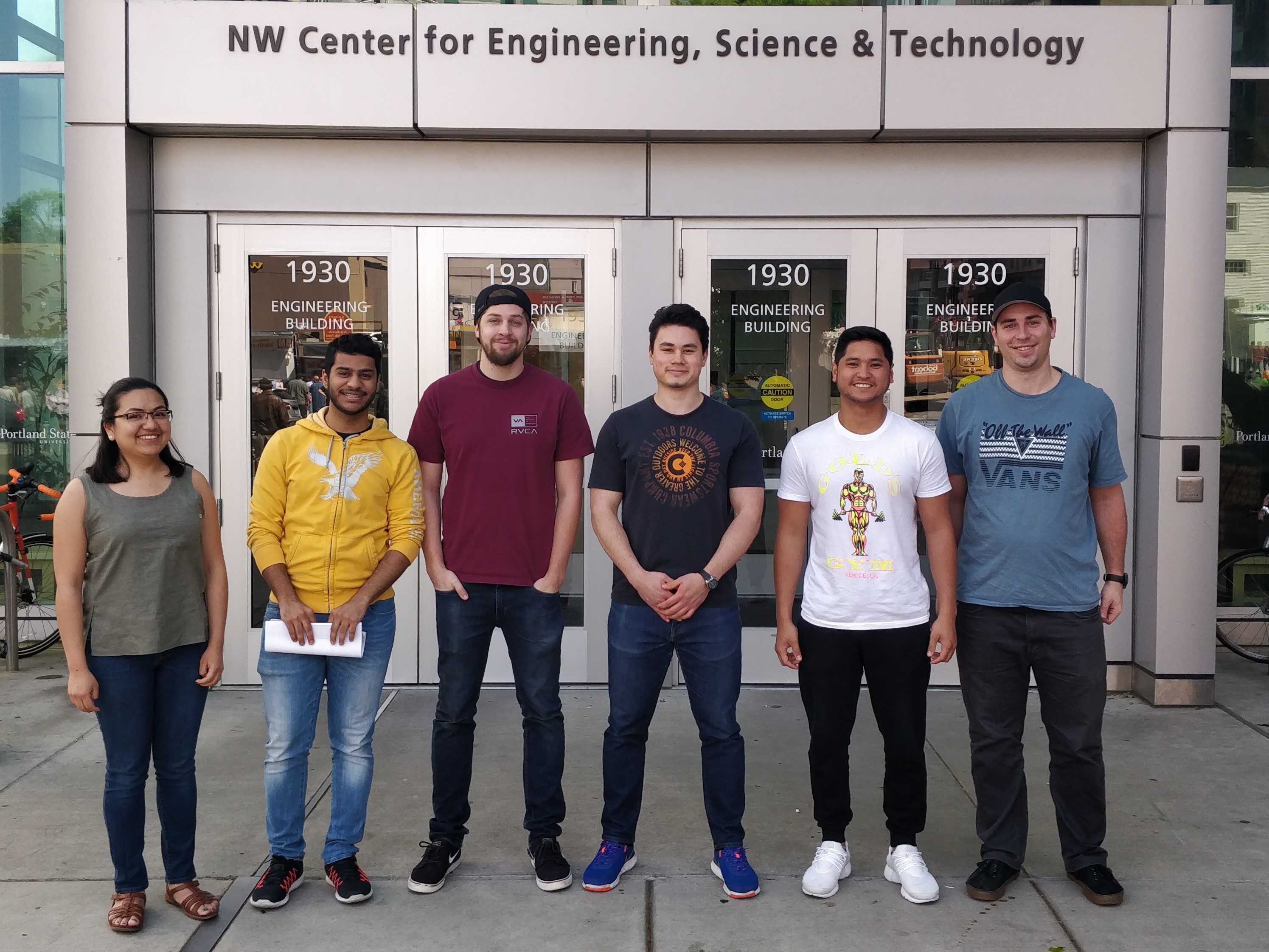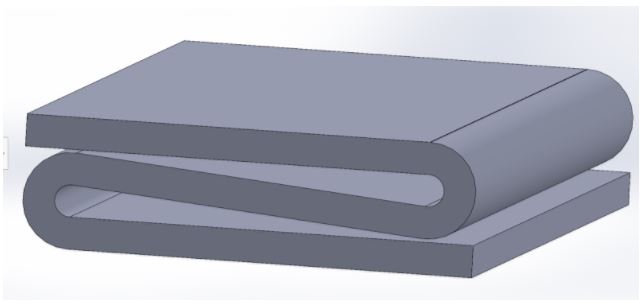Project Objective
Design and build an aesthetic and mechanically functional prototype for a pocketable, flexible screen device that can survive several thousand folding cycles.
Team

The project team consists of:
Customer/Market Requirements
The project sponsor requires a device that is compatible with a flexible screen, rigid, durable and portable. Further requirements include:
-
A seamless and smooth touchscreen experience
-
An active screen section when the device is folded
-
Dust and lint proof
-
A bend radius of 2mm-4mm to prevent deformation of the screen
-
A maximum thickness of 24 mm
-
Withstand a 3-point bending load of 100 N, 150000 folding cycles, and a compressive load of 130 N
Design Challenges
The team was tasked with designing a mechanical support for a flexible screen. The team chose to focus on a tablet sized device that can fold into a smartphone sized device. The main challenge is making a device that is both flexible enough to fold, and rigid enough to use in tablet mode. While in tablet mode the device must be rigid enough to provide a smooth touchscreen experience with no gaps, bumps, or deformations that can be detected by the user. In addition, the screen cannot have any applied tension since it will cause distortion in the pixels. The team chose to create a rigid casing that can bend at two axis. This creates the challenge of having two different bending radii that need to be accounted for; one on the inside fold and one on the outside. Because the screen cannot stretch, the screen must also be able to slide to accommodate the bend.
Outcomes
The final design is a bi-fold tablet with three different casing sections, friction hinges at the bend points, and a frame to keep the screen attached to the mechanical support.
The figure below shows the flexible screen support while folded.
